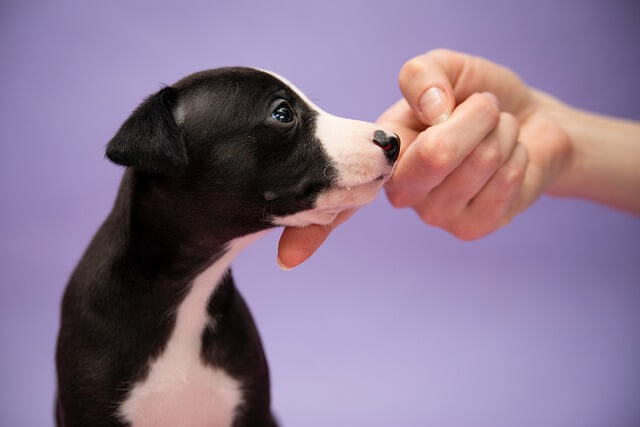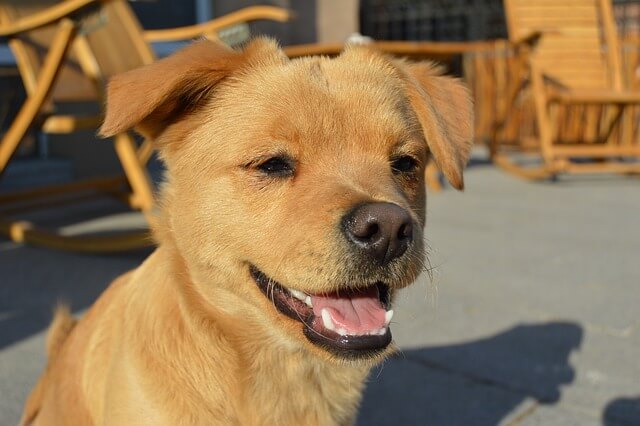Do You Know What These Puppy Sounds Mean?
04.05.2022.
How can you understand all those puppy whimpers, yelps, growls, and screams if your sobbing pup is driving you crazy? When your puppy communicates with other dogs, they reinforce their place in their family. A puppy's squeaky voice can either entice or frighten you. Puppy barks and growls are used in both playful and aggressive situations, which can be perplexing.
Like inflection in speech, vocalizations are often used to punctuate what the body language is saying. Dogs have become much more talkative than their forebears due to realizing how important verbal communication is to humans. Getting a new puppy can be confusing, especially if you're a first-time dog owner. Luckily, we are here to help you decipher what your puppy is trying to tell you. Here are the most common puppy sounds and what they mean.
RELATED: Puppy Alone Time - Here's How Long You Can Leave a Puppy Alone
Yelps, Whines, and Whimpers
Yelps and whimpers convey submission, discomfort, or fear. The meaning of each of these sounds will depend on the puppy's body language. Wheezing, whimpering, and yelping are all signs of your puppy's fear as they attempt to keep their distance from you or something else that's scaring them. Repeated yelping and holding up or avoiding the injured paw are common signs of puppy injury.

The use of whines, whimpers, and yelps to approach a dominant individual is likewise common practice (usually the owner). So, your puppy will use these methods to get your attention, food, or they're signaling to you they need to go potty.
Snarls and Growls
Warning growls and snarls are a common occurrence in dogs. This is a way for dogs to tell others to back off and stay away from them.
Snarls, which show the teeth but do not necessarily utter a sound, are a symptom of mild fear. Growls, which can be made with or without the mouth open, convey a greater degree of anxiety. The growl of a dog is both a protection mechanism and a threat. It is common to use them when your puppy attacks a toy or engages in playfights with other pups during playtime.
RELATED: Best Puppy Treats
While a dog's growl and snarl can be frightening, these sounds can be pretty useful as a means of communication for both your pet and yourself. Puppies that have been taught not to growl are more likely to bite unexpectedly than those that have been taught to do so. The best thing you can do is teach bite inhibition to your pup. There should be times during which your puppy will snarl and growl so that you may be alerted and alter your own behavior accordingly: during play, when scared or in pain, for example.

Barking
Wolves don't bark very much, although it's the most common canine vocalization. As a greeting, during play, and in defense, it is common for dogs to use barks to communicate their intentions. Dominance signals include barks. However, this does not imply that barking is always a sign of hostility.
RELATED: Best Puppy Shampoos
When a dog starts barking, it's like a fire alarm for the household, alerting them to anything strange. A friend or stranger may show up unexpectedly, or they may hear thunder or see something unusual, like their owner wearing a hat. Dogs can be taught to stop barking if they are left alone for long periods, which can be done successfully.
On the other hand, dogs aren't going to quit barking any time soon. Barking back at a dog doesn't work because they think you want to join in on the fun, so they bark even louder when you tell them to stop. It's impossible to stop your puppy from barking completely, but there are ways to minimize it.
Howls
Dogs howl to communicate their feelings and locate the rest of the "pack" if they're missing. When a dog howls, it usually means they're lonely and wants someone to join them. Puppies who are left alone at home or in a room may howl.
Dogs of some breeds howl more than those of others. Alaskan Malamutes, Laikas, Greenland Dogs, and Siberian Huskies are some examples of northern dog breeds that may be closer to their wolf ancestors than other breeds. It is also common for hound breeds to howl more frequently because they were bred to "bay" to announce their whereabouts while tracking or hunting.

With a single lone howl often returned by any other dog in the vicinity, howls appear to be contagious. Dogs may respond enthusiastically to a siren if they think it's a howl.
Laughing
Puppies can, in fact, laugh! Even the sound isn't what you'd anticipate. The dog chuckle appears only during play, in contrast to the other puppy sounds.
A laughing dog sounds like "Ha-ha-ha-ha!" but without the "a" vowel sounding. According to researchers, it's just a quick exhalation. According to certain studies, a "canine laugh" of delight has been linked to a dog sneezing.
RELATED: 5 Puppy Training Tips
Shelter canines have been soothed by listening to recordings of a dog's panting-laugh sound. Because laughing is contagious and good medicine, if you sneeze, your puppy may respond by sneezing as well. It's up to you!
Mixed Signals
There are times when puppies don't know what they feel. Owners may have a tough time deciphering what their pets are saying because of their inability to communicate clearly. All the sounds we mentioned above can be heard from puppies who aren't sure how they're feeling. In most cases, they are more frightened than hostile. Preventing dog bites and fostering a positive relationship can be achieved by learning to comprehend what your puppy is trying to communicate. We certainly hope we shed some light on what your puppy's sounds mean, and you will be able to understand them a little bit better.
World Dog Finder team







Share